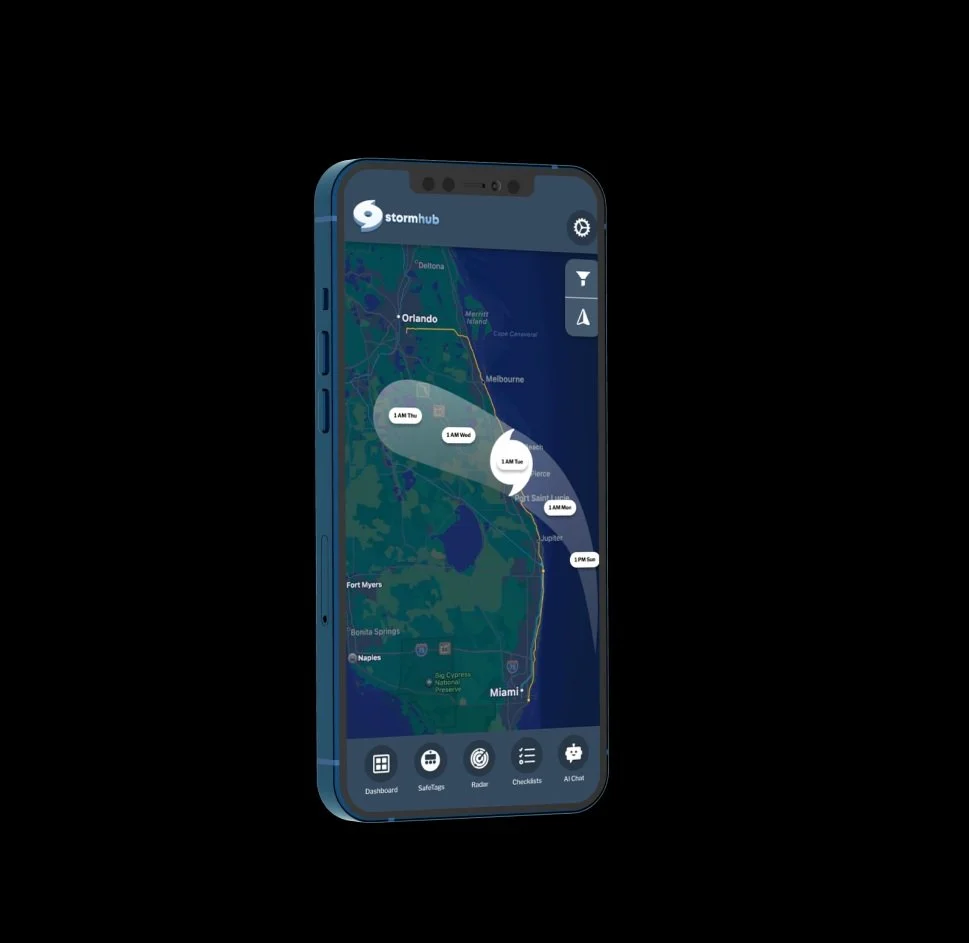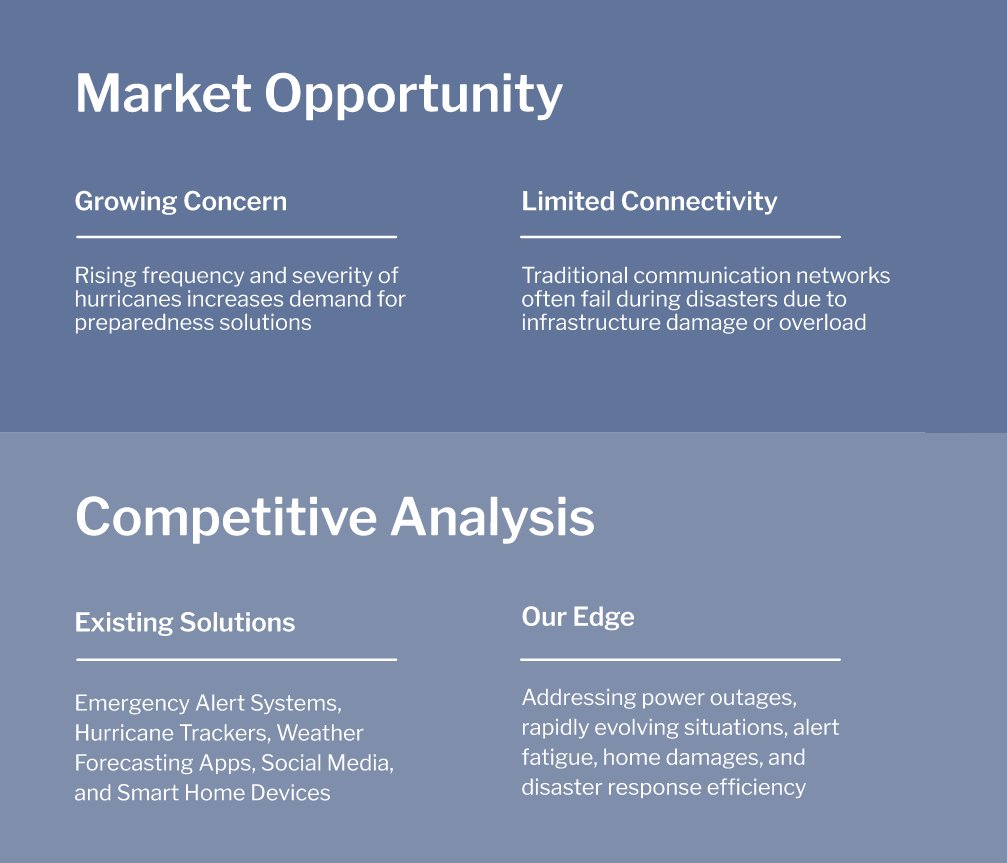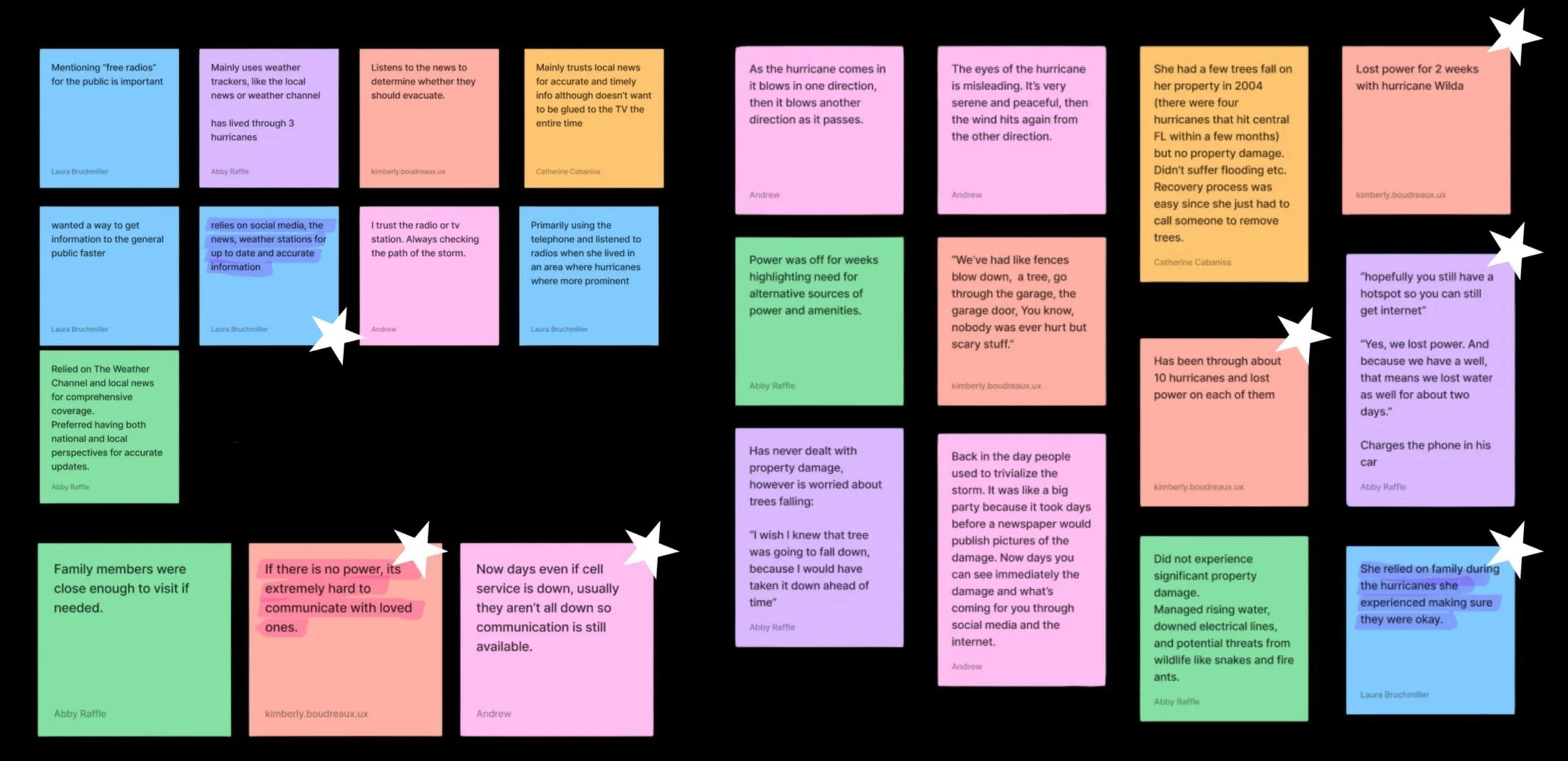
Project Overview
Timeline: 4 Weeks
StormHub was created with one goal in mind: to help people feel safe and prepared in the face of unpredictable storms. My team and I understood how overwhelming it can be when a storm is approaching, and we wanted to create something that could truly make a difference. We designed StormHub to be a lifesaving tool, offering guidance and reassurance to anyone, no matter their level of preparedness.
With this idea in mind, we wanted to do as much research as possible. This included what competitors were offering, and what users actually needed when using a storm tracker/preparedness app. We interviewed 12 people and surveyed over 50 people and what we found was very inciteful.
We knew we had to create something that people could use to communicate with loved ones even when the power goes out, and cell service isn’t working.
We began our design process with simple sketches. We also pivoted away from the concept of the app solely being a hurricane tracking and preparedness app, as we discovered this app can be used to monitor and prepare for any storm.
We also wanted StormHub to be able to work with any smart device. This way in case your smart phone dies, you can still access all the features on a smartwatch or tablet.
After defining our key features, we knew we needed something more to distinguish our app from the competition. That’s when we introduced an AI chatbot designed to assist users by answering any questions about storm preparation, survival, and recovery.
In addition to the Ai chatbot, we wanted to solve the problem our users were expressing; communication with loved ones. Our prototype solution: SafeTag. The SafeTag is a simple device worn or held by our users that allows them to immediately communicate with anyone in their network at the push of a button. Your network can view your status and request or receive check-ins through their mobile device or Smart Watch.
Our Lessons Learned
During testing, we realized that our original IoT solution—which included smart home devices for shutting off utilities and a personal weather station—wasn't fully addressing the key challenges users faced during storms. This insight led us to pivot our focus toward emergency response and offline solutions, which we found to be more effective in helping people during critical moments. However, as we responded to user feedback and needs, we encountered scope creep, as the project expanded beyond its initial vision.
Looking ahead, we plan to broaden StormHub’s capabilities to cover preparedness for other disasters that cause power outages and communication issues, such as extreme heat and cold events. Additionally, we’re excited to further develop our IoT features, with plans to introduce accessibility improvements like tactile textures on buttons to enhance usability for all.







